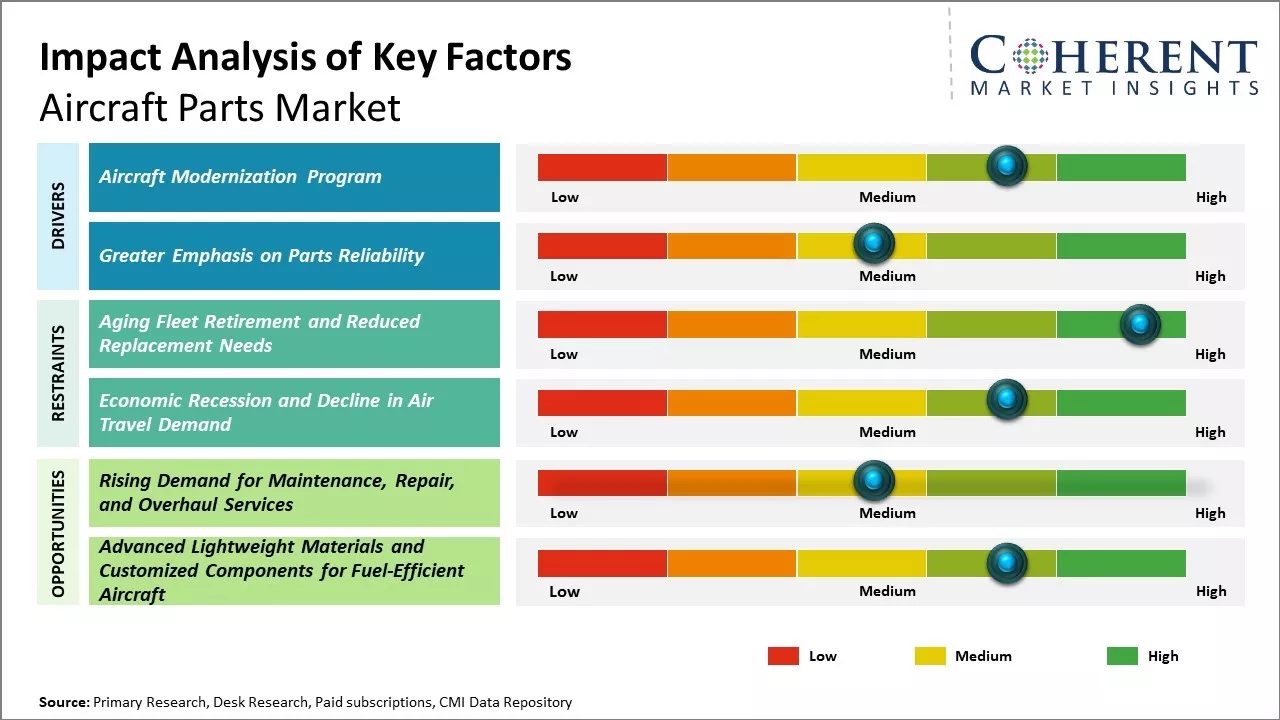The aircraft parts market is estimated to be valued at US$ 723.81 billion in 2025 and is expected to reach US$ 1,060.62 billion by 2032, exhibiting a compound annual growth rate (CAGR) of 5.6% from 2025 to 2032.

To learn more about this report, Request sample copy
The aircraft parts market is experiencing positive growth driven by factors such as the increasing global commercial aircraft fleet, demand for fuel-efficient replacement parts, and mandatory aircraft maintenance, repair, and overhaul activities. However, geopolitical risks, fluctuating raw material prices, and delays in aircraft deliveries are some challenges faced by the market. Key players are investing in designing lightweight and advanced materials to reduce costs and improve aircraft performance. Adoption of 3D printing and additive manufacturing is gaining traction in the production of aircraft components offer opportunities for customized designs with reduced waste. Overall, the market is driven by the need for increased air travel and mobility globally.
Aircraft Modernization Program
The commercial aviation industry has seen tremendous growth over the past few decades driven by increasing globalization and rising incomes in developing economies. Airlines around the world have ramped up the procurement of new aircraft to support their expansion plans as well as replace older fleet with modern and fuel-efficient planes. Aircraft manufacturers like Airbus and Boeing are reporting record backlogs for their narrowbody and widebody aircraft as airlines place large orders to accommodate traffic growth. This massive aircraft procurement drive has created robust demand for aircraft parts from manufacturers.
As the fleet of newer aircraft join the networks of major carriers, the demand for replacement parts to support the modern aircraft is rising. The sophisticated systems and components in new planes require advanced parts that must meet stringent quality and reliability standards. Manufacturers are investing heavily in developing cutting-edge components that improve fuel-efficiency, reduce maintenance turnaround times, and extend service life of assets. Several airlines are also entering into long-term partnerships with OEMs and MRO companies for comprehensive supplies management programs. This ensures a steady supply of genuine parts for predictable maintenance schedules and maximizes aircraft uptime. The lifecycle management of costly aircraft assets is driving greater reliance on manufacturers for customized parts and services packages.
For instance, in May 2023, Asia Digital Engineering (ADE), the engineering and maintenance subsidiary of Capital A, launched two groundbreaking digital solutions: AEROTRADE and ELEVADE FLEET. These platforms aim to revolutionize aircraft parts procurement and holistic aircraft health management in Asia, streamlining operations, enhancing efficiency, and elevating overall aviation industry performance.
Joining thousands of companies around the world committed to making the Excellent Business Solutions.
View All Our Clients